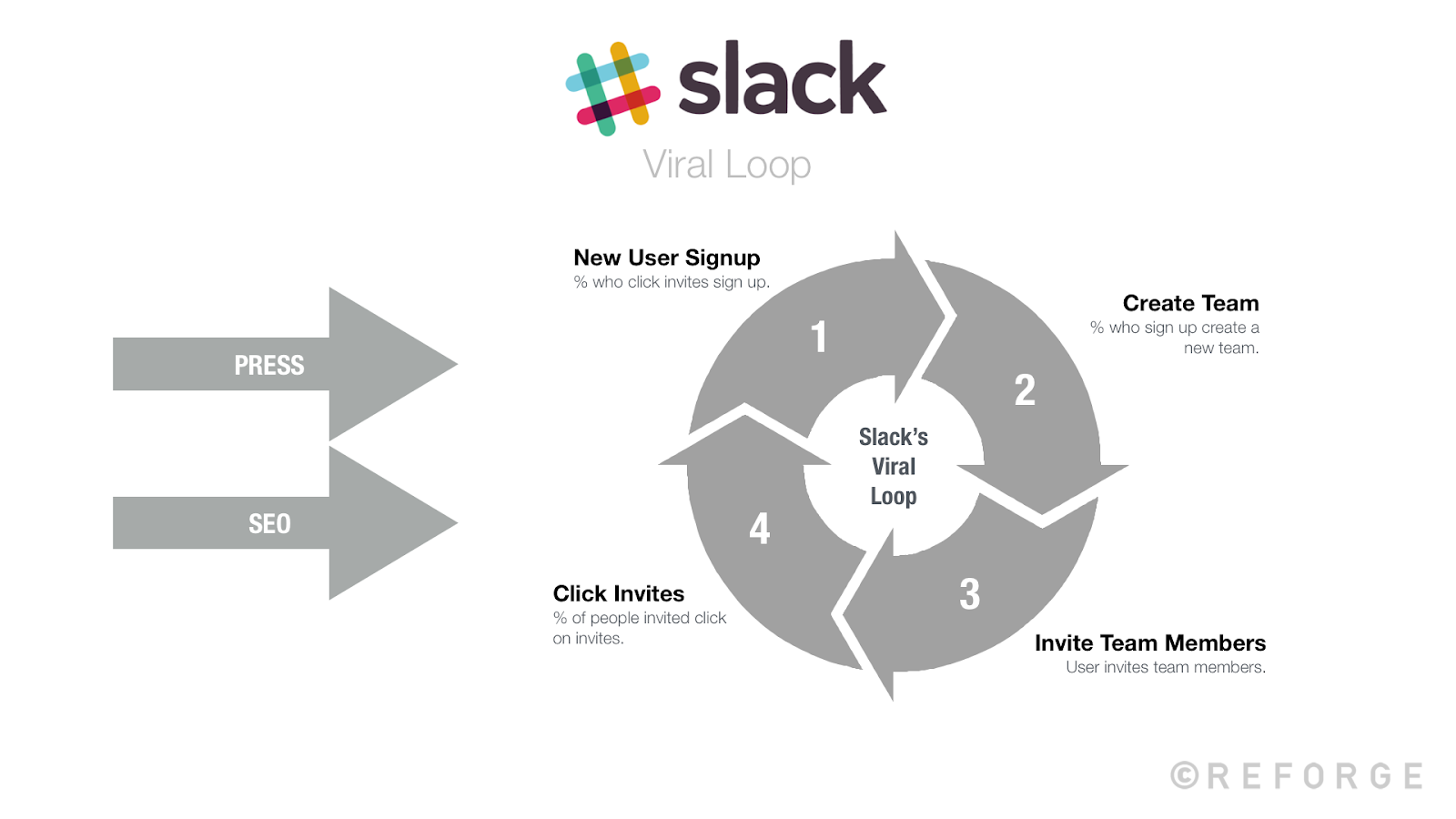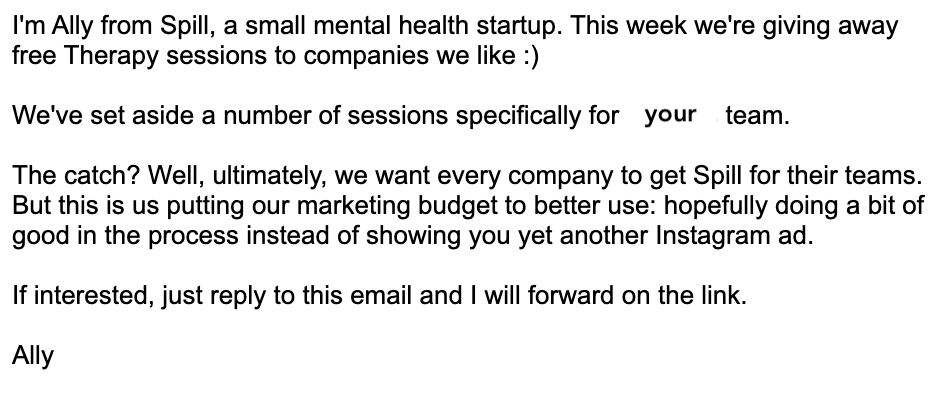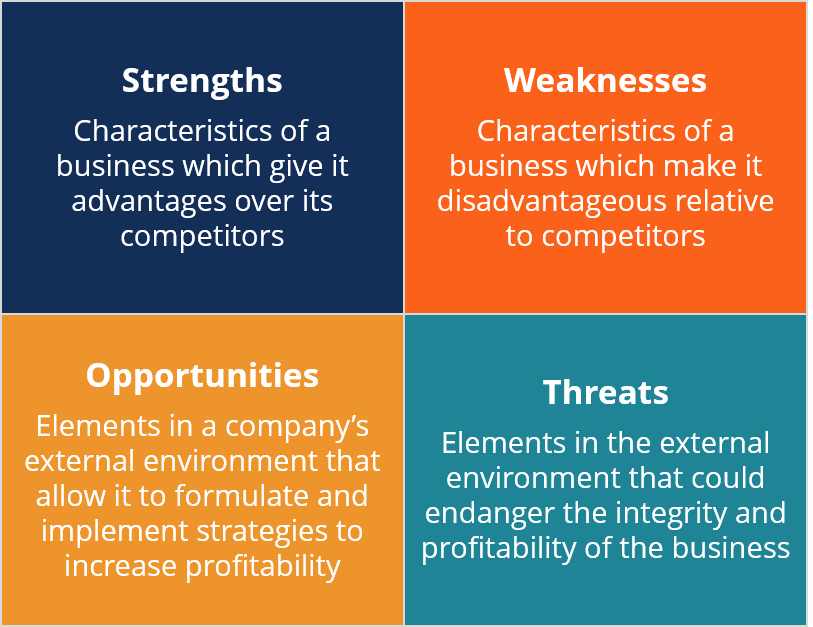The Tech Founder’s Guide to Go-To-Market Strategy
You might have an amazing product but without a Go-to-Market strategy to match you won’t get far. Build out your GTM strategy with our ultimate guide.

Being a founder means wearing many hats, one of which is for growth and business development. If you have a technical background, this might be wildly out of your comfort zone. You may know product strategy or dev-ops like the back of your hand, but when it comes to actually getting your product in front of the right people, things get murky!
You might even feel like marketing strategies just aren’t all that important. If the product is executed effectively, why wouldn’t early adopters find you? Build it and they will come… right?
Your product may be excellent, but your go to market (GTM) strategy ensures that you’re solving a painful problem for a highly motivated group of people and that you know where to find them. A GTM strategy is simply a game plan that you’ll create and execute to get new customers for your new product.
Part 1: Defining a GTM Strategy
Why do I need a go-to-market strategy?
Even if you have no marketing team and no budget to hire, you’ll need a GTM strategy. In fact, small startups bringing a new product to market must develop a starter pack of growth tactics, even if you haven’t reached product-market fit.
Your go to market strategy will play a huge role in early investment rounds or when you’re building up to a new product launch. Don’t let retention and engagement challenges keep you from better understanding your market. Having an initial GTM strategy shows you know your ideal customer, what acquisition levers to pull, and how you’ll grow over time.
Your GTM strategy will answer the simple question: What do we need to do to get our first 1,000 high-quality customers?
This question can be scaled according to the goals of your business, but the idea is that your first GTM strategy should hone in on that first significant milestone. This will be your roadmap for customer acquisition and a tool that your entire team can use as a springboard for growth.
Marketing jargon you should know
Marketers love using fancy terms to talk about strategies and tactics. While you’re probably aware of a lot of what’s thrown around, here is some key vocabulary you should know before building your GTM strategy.
Product-market fit
“In my view, product/market fit is the most important thing to get right as a startup entrepreneur. Without solving some pain point that the customer gets so excited about they tell their friends, it's really hard in the modern age to get any liftoff.”
- Scott Cook, Co-Founder of Intuit
Reaching product-market fit means that you have a product that satisfies high market demand. So what does that look like?
Customers report that they would be extremely disappointed if your product were to disappear
Over time, you may realize that you can’t cope with the influx of customers or users
Your customers start to advocate and sell for you
There are many things that signal product-market fit. It tends to be gradual, and it can also shift and disappear over time if you aren’t constantly listening to your customer and delivering on their needs.
Organic vs. paid marketing
Before diving in, it’s important to clarify one point: organic marketing isn’t free. Content marketing is a common form of organic marketing (ex. templates, guides, reports, social media assets, etc.)
The content has to come from somewhere. Typically, it comes from freelance budgets or employee salaries. That said, even if there’s residual spend behind it, organic marketing typically focuses on pulling word-of-mouth levers and search engine traffic.
Organic, viral marketing tends to be the gold standard of the startup marketing world. If people can’t stop talking about your product, it’s only a matter of time before that’s reflected in your metrics. Generally, you’ll see returns from organic efforts in longer periods of time, typically three, six, or up to 12 months.

Paid marketing on the other hand can include a wide range of marketing campaigns – well beyond just “ads.” This can include paid influencer marketing, sponsorship, and the well-known route of social media or search ads. It also tends to be more immediate. In theory, you could launch a paid campaign and see results within hours. Remember to factor in paid marketing spend into your GTM budget. In the early days, you might not be too concerned with return on ad spend (ROAS) if your priority is growth rather than profitability.
Ideally, your go to market strategy should include a mix of both paid and organic, but the latter will likely prove more lucrative to potential investors. If you do have to lean heavily on paid marketing, you should still indicate how organic tactics may come into play after you’ve started to generate some traction.
Linear strategies vs. loops
Growth marketers are often chatting about one loop or another. That’s because loops tend to drive faster, more stable growth. Loops are self-serving – the input drives output that can then be reinvested in an endless cycle.
Most companies have a mix of linear efforts and loops. These can be built into the product itself or executed as ad-hoc marketing strategies.

For example, Slack uses SEO as a linear channel – they rank for a keyword, a user searches and lands on the page, and a certain percentage signs up. But they also have viral loops to complement this process: once a user signs up, they create a team, so then they invite team members who click their invites and sign up, restarting the loop.
When identifying the right channels in your GTM strategy, you’ll want to ensure you have a nice balance of linear tactics and loops.
Part 2: Getting GTM off the Ground
Phase 1: Understanding your target market and how to speak to them
Key questions to consider:
Who is the buyer persona you are trying to reach first?
Who would be most disappointed if your product disappeared?
What is the most painful problem your customers face?
How does your product address severe pain points?
Who would get the most value from your product?
How to do it:
The best marketing plan you can ever have for your business is to have a great product or service. In all likelihood, you know what it takes to build a great product. But how do you ensure that your product is solving a problem so intense that customers are highly motivated to adopt it?
1. Conduct user/customer interviews
Most of the time when you’re building a product, you’re starting from somewhere. Many founders source ideas from challenges they’ve faced or from the challenges of someone they know. That means you’ll probably have an idea of where to start with your first interviews.
Interviewing customers gives you a unique advantage. Many larger companies and even some startups skip this step and don’t speak to the end-user until much later in the game. Having an intimate awareness of your customers’ needs will help you get ahead.
Conducting an excellent interview means remaining emotionally detached and open. Here are some questions that will be helpful in understanding your customers and leaving room for patterns to emerge:
Where did you first hear about [PRODUCT]?
Walk me through your routine. When do you use [PRODUCT]?
If you had a magic wand, what features would you add to [PRODUCT]?
Before you found [PRODUCT], what did you use to accomplish your goals?
How did you feel when you first looked for [PRODUCT]? What pushed you to take action?
If you’re building an app or platform, you’ll likely conduct your first interviews and testing sessions on platforms like Whereby. The perk of using Whereby as your video meeting platform is that your customer won’t need to install anything to jump into the call. Video calls with customers can help you establish strong relationships with your early adopters. You can also send out asynchronous surveys using Google Forms, Typeform or SurveyMonkey.
Next steps:
Create a list of your top questions for customer interviews
Find a few people in your anticipated target market and set up calls
Keep a central database of notes from your interviews
Analyze your interviews and try to sort feedback and learnings into “pattern buckets”
2. Build buyer personas
Your product cannot be for everyone. It’s impossible to build something that solves every pain point and pleases every customer. To avoid getting stuck in the “something for everyone” trap, try asking yourself: “who is the most motivated to alleviate their pain points with a product like mine?”
As you conduct interviews, you’ll start to recognize patterns of pain points. Your product should aim to address the most severe of these patterns. The more discomfort a potential customer faces, the more likely they are to act on that discomfort.
Next steps:
By honing in on who would get the most value out of your product, you’ll put yourself on the path toward building a successful company. To get there, you should focus on one persona. Create a customer canvas that includes information including:
Demographics
Motivations
Pain points
Decision power
Interests
Habits and routines
Even if this changes over time, it’s important that you assess who will be the first target persona.
3. Hone in on pain points and value propositions
Your marketing positioning should focus on the value of your product, not just the features. As you focus your energy on the most significant pain points, think about how your product directly responds to those concerns. This is a great place to start for your messaging.
Robust, well-rounded messaging typically includes claims, unique value propositions, and reasons to believe in your product. Let’s have a look at each on Whereby’s website to see how it builds strong messaging.
Unique value propositions and claims
Leaning on humor, relatable struggles, or even just directly pointing out the obvious can be a great way to connect with your audience and position your product nicely. Your messaging should also point out the outcomes of using your product – how it improves, changes, or impacts something, typically backed up with data.
At Whereby, we understand that video meetings can be a pain – but they don’t need to be! Here’s how we break it down:
Pain point: Remote teams want to collaborate without the hurdles of downloading software, broken experiences, lags, or other issues – it wastes valuable time.
Messaging: Escape your video meeting nightmare: Whereby makes video meetings delightful.
Note how value props can speak about features (no software needed), but the most important element is that they speak to a pain point (video meetings can be annoying or hard).
Reasons to believe
These can include social proof and other ways of developing trust for why your product is the best way to solve a problem. Reviews, companies you work with, ratings, and case studies are great examples of strong reasons to believe. If you don’t have ratings or reviews, you could also include quotes from industry experts, advisors or angel investors who have seen or used your product.


Never underestimate the power of social proof. 88% of consumers trust user reviews as much as personal recommendations.
Next steps:
Create a list of pain points in one column and your product’s response to those pain points in another
Then, add a column with how you’d phrase those pain points if you were explaining them to someone in a conversation
Finally, add in reasons to believe and any data you may have to back up your claims
4. Test your messaging
Struggling to come up with the perfect positioning for your product? Have no fear – it’s a pretty common issue. If you have a few directions you’d like to go, a lean way to test your messaging is through paid ads with small budgets.
You can also conduct testing sessions with customers to understand what they gravitate towards. This approach is slightly more manual.
Next steps:
Put a small spend behind a few different A/B tests and compare your results. Some metrics to consider might be:
Click-through rates
Conversion rates
Cohort retention and engagement rates
Cost of acquired customer
Phase 2: Developing your marketing strategy and action plan
Key questions to consider:
Where are your target personas already hanging out?
What type of audience should you build and where?
How do you get your target audience to take action?
How do your marketing campaigns paint a picture of your business plan to investors?
What is your buyer’s journey and how can you optimize conversions at each stage?
How to do it:
Marketing often gets a bad rep for being overly persistent (aka annoying). It’s in your face, constantly trying to get your attention or your money. Marketers and sales teams clog your DMs and your feeds, and this can’t possibly be the most effective way to build a business.
Well, it isn’t. Marketing, when done well, is invisible. But to be invisible you have to really understand not only your audience, but how to provide value, where to deliver it, and how to push people down your funnels or through your flywheels. Each business is different, but let’s look at an extremely successful case study to see how it’s done.
Case Study: MorningBrew’s Growth from 0 to 2.5 Million Subscribers
MorningBrew is a business newsletter that arrives fresh in your inbox daily. Co-founders Alex Lieberman and Austin Rief were dissatisfied college students who thought there was a better way to keep up with business news. In just six years, the two founders have grown their business into a $75 million media company. So how did they do it?
1. Focus on the right channels and tactics
Organic
MorningBrew’s GTM strategy included what Alex refers to as the Hub and Spoke model.

Hubs are individuals and organizations who are connected to a concentration of spokes.
Spokes are the target customers.
With finite time and resources, the MorningBrew founders knew they would need to prioritize how they leveraged hubs based on the effort needed to activate them.
In their case, Alex and his co-founder Austin discovered that they were themselves hubs. They spent all of their time running to business classes and pitching their newsletter to students who would benefit from the value most. This was the early prototype for their ambassador program, which then scaled into an entirely automated referral scheme.
Paid
After some time, MorningBrew began to include paid strategies in their marketing efforts. They shipped a lot of marketing campaigns on different channels, collected learnings, and then evaluated which channels performed best – and doubled down.
The North Star metric they used to evaluate a channel is what Alex calls the “CAC-HQ” or the “cost of acquired high-quality customer.” For MorningBrew, a high-quality customer is a reader who opens at least six newsletters (this would be considered an activated subscriber). Whichever channel produces the most HQ customers at the lowest acquisition cost, wins!
Clearly, this is a robust GTM strategy. In summary, it includes:
Influencer marketing
Referral schemes
Guerilla marketing (physically going somewhere to hand out flyers)
Paid marketing (including ads)
Cross-referral marketing (another newsletter linking to theirs)
Product marketing to an existing audience
They discovered this strategy through rapid experimentation. This, they combined with prioritization by understanding how much effort and resources they’d need to access each hub.
Next steps:
Think about your own hubs. Which are the highest effort? Which are the lowest?
Make a list of the channels that are the most lucrative to start with
List two to three steps you can take to get started on that channel
Research what types of content are most successful on that channel
There’s no need to reinvent the wheel. Go where your people are.
2. Build the right audience
There’s a lot of competition for attention these days. That means building an audience takes time and a lot of effort. But why build an audience in the first place? Spending some time on developing brand awareness and audience building will help deliver a steady stream of customers/users towards your product.
When MorningBrew started to build an audience, they had to be precise about where to lay their efforts. With only two co-founders and a dorm room office, resources were nonexistent.
Co-founder Alex Lieberman has a framework for how he views the different types of audiences. It’s called the Audience Funnel and it’s a play on the traditional marketing and sales funnel that’s a bit more approachable for startups:

Rented Audience
What: You build this audience on a platform that works as an intermediary between you and your customers. This is how you build mass awareness with your content about your product or brand.
Where: Social media platforms (LinkedIn, TikTok, Instagram, Twitter, YouTube, Twitch, etc.), SEO traffic
The Benefits: It’s not often that you can walk into a room where there are already potentially billions of people waiting. Sharing on these platforms is easy – content discovery and customer access are abundant.
The Limitations: Whenever there is an intermediary, there is a risk. You play by the rules of these platforms. They control the algorithms and who sees what content. You’re not in control of distribution or your relationships as much as you might be with other audiences. And there’s always a risk that your audience could be stolen.
Owned Audience
What: In this case, there’s no central gatekeeper (such as Facebook) that stands between you and your audience. It also tends to be an opt-in audience.
Where: Newsletters, podcasts, events, webinars
The Benefits: These are more intimate spaces to build an audience. You have closer access and can nurture your customer experience with more precision. A brand that’s built on an owned audience tends to sit on a stronger foundation for long-term growth and opportunity. This can be a great audience for building leads to monetize later on.
The Limitations: You miss out on mass scale shareability and discoverability with an owned audience. This is why it takes more time to build this kind of audience.
Monetized Audience
What: You build this audience and monetize through a direct product/subscription.
Where: Merchandise website, product shop, subscription.
The Benefits: In an owned or rented audience setting, you may make money from advertisements. In a monetized audience, you make money directly from your audience. If you’re a SaaS company, this would serve as your “bottom of funnel” and would be your customers. If you struggle to build an audience directly at the monetized stage, you may want to move up the funnel to feed in.
The Limitations: This requires the most amount of time and financial investment from your audience. Sometimes, it may be logical to start with directly building a monetized audience. But in most cases, it’s easier to build a rented or owned audience and then funnel them down into a monetized one.
When MorningBrew began its growth journey, the co-founders started with an owned audience. By doing this, they ensured that their audience couldn’t be stolen. After mass growth and building strong one-to-one relationships with their audience, they then had the luxury of creating a rented audience on a platform of their choosing. Now, MorningBrew is building a paid business education product that they will market directly to the millions of readers they built through owned and rented audiences.
When startups are gearing up for an investment round or a product launch, it’s tempting to scatter efforts everywhere. This is a fast path to having 15 social channels and no conversions. There’s no rulebook that says you have to start with a rented audience. If your product relies on meaningful relationship management or the hubs that are most accessible to you require an owned audience, that may be the best place to start.
Next steps:
Decide on a starting point –and remember you can’t start everywhere at once
Set goals around audience growth for whichever type you choose
Run a series of experiments to grow your audience
Analyze how you can move this audience down the funnel towards monetization
3. Beware marketing myths
When thinking about scaling your business, it’s easy to assume that performance marketing is a quick win to get customers on board. But beware– paid performance marketing is not the solution to everything! When evaluating your pitch, VCs will take your entire go to market strategy into account. This includes an assessment of scalability and profitability. If you’re currently in an early, pre-revenue (or even pre-monetization) stage, your strategy will be more compelling if it’s organic.
Moreover, organic strategies and viral growth loops help show that your product is in demand – so much so that no marketing spend is needed to convince people to adopt your product.
A great way to balance a need for traction in your metrics with a strong, organic strategy is to use paid tactics to complement your efforts. This may include running ads to bring in new customers while focusing your efforts on developing viral loops to turn those new customers into advocates. Using ad spend to generate leads isn’t conclusively a “bad thing”. But you do need to demonstrate that you can acquire customers at a sustainable cost. By using paid and organic tactics together, you’ll drive down your customer acquisition cost (CAC) (how much you pay to get each customer).
Combining paid and organic tactics could also look like being creative with how you spend your advertising budget. For example, Spill is a B2B mental health support product. They offer a variety of services to help companies support their teams including online therapy sessions. Around the holidays, a particularly challenging time of year for many folks, Spill sent out this email:

This is a creative way to use marketing spend in new ways to engage potential customers and create delightful experiences that will feed your word-of-mouth marketing.
Phase 3: Analyzing the field
Key questions to consider:
What other individuals or organizations are players in your market?
What would your primary customer persona use instead of your product?
What is your competitive advantage?
How does your offering (including your pricing model) compare to other existing products?
What metrics should you use to show our potential in this new market?
How to do it:
In all likelihood, you’ll be aware of your competitors long before you actually start writing a go-to-market strategy. Founders face a unique challenge, though. Not only do you have to be aware of the competition, you also have to operate with blinders on to keep moving forward with your own product. Focusing too much on what others in your market are doing is often not as important as perfecting your own technique in the early stages.
So why is competitor analysis an important part of your GTM strategy? You have to paint a picture of how your product stands out from the crowd. In reality, there are very few new ideas in the world. This means that you need to demonstrate to investors, stakeholders, and eventually customers, how your product and tactics set you apart.
1. Identify the competition
Generally, you’ll be looking at two kinds of competitors: direct and indirect.
Direct competitors are the ones whose products could closely replace yours to solve the same or similar problems. Indirect competitors might address a tangential problem or similar symptom. But with indirect competitors, it’s unlikely their product would supplant yours in the market.
Indirect competitors are great for analyzing and understanding market trends that your direct competitors may be missing. Don’t count them out just because their product isn’t a perfect substitute.
Direct competitors on the other hand are the ones you’ll want to use for direct comparison to your brand and unique selling points. Your value proposition should be unique from these competitors.
Next steps:
Find a centralized place to curate your competitor research
Ask your current customers or potential customers what products or services they would use if yours didn’t exist or before they discovered yours
Look at who is producing the best content around your industry or market
2. Observe their marketing and sales strategy
Approaching competitors with a humble mindset means being open to learning from their hits and misses. This can help you build and iterate faster than if you try to develop everything in a vacuum.
Here are some things to ask yourself when analyzing your competitors’ marketing:
What formats or campaigns do they run frequently? (This indicates it could be a successful tactic.)
On what channels do they get the most quality engagement?
What lead generation campaigns do they deploy?
What does their marketing/sales funnel look like?
What types of content do they produce?
Even if you’re in a pre-monetization stage, investors will likely ask about your pricing strategy for the future. While you’re analyzing marketing campaigns, this is a good time to have a look at pricing models in your market.
Keep in mind: What your competitors are doing is not what you should be doing. Simply copying the tactics of your direct competitors means you’ll always be one step behind them. This audit should help bolster your strategy, not dictate it.
3. Conduct a SWOT analysis of their business
Consider running a SWOT analysis for each direct competitor. SWOT stands for strengths, weaknesses, opportunities, and threats. By asking similar questions for each competitor, you’ll be able to easily recognize patterns and gaps in the market.
Here are some questions to ask in your SWOT analysis:
What could this business be doing better?
What do customers complain about when they are unhappy with this product?
What does this product have that’s hard to copy?
What opportunities in the market is this product missing?
What do customers rave about when they talk about this product?

Pro tip: If you use a tool like Slack, open a channel called #competitors and drop in links as you discover them. You can also dump your SWOT analyses here. This helps keep everything in one place so you’ll have a go-source when you’re ready to build out your investor deck.
How do I know if my go-to-market strategy is ready?
Like any worthy marketing strategy, it’s never 100% done. GTM strategy documents are living – as you learn, you should adapt them accordingly. The key to any GTM strategy is to start small. Set up your simple processes first. Get the ball rolling. Keep it consistent.
When you’re building a GTM strategy to inevitably pitch your startup to VCs and the like, you’ll start to create ambitious goals and big plans. The most important thing you can do as a founder when actually bringing this strategy document to life is managing your expectations.
Most marketing strategies take consistency, trial and error, commitment, and time to work. Even viral tactics rarely succeed on the first go. While it’s important to experiment, pivot, and explore, it’s also key to give your marketing campaigns enough time to succeed before pulling the plug. In reality, very few companies take off overnight. But if you’re consistently providing value for a targeted audience you truly understand and serve, it’s only a matter of time.


